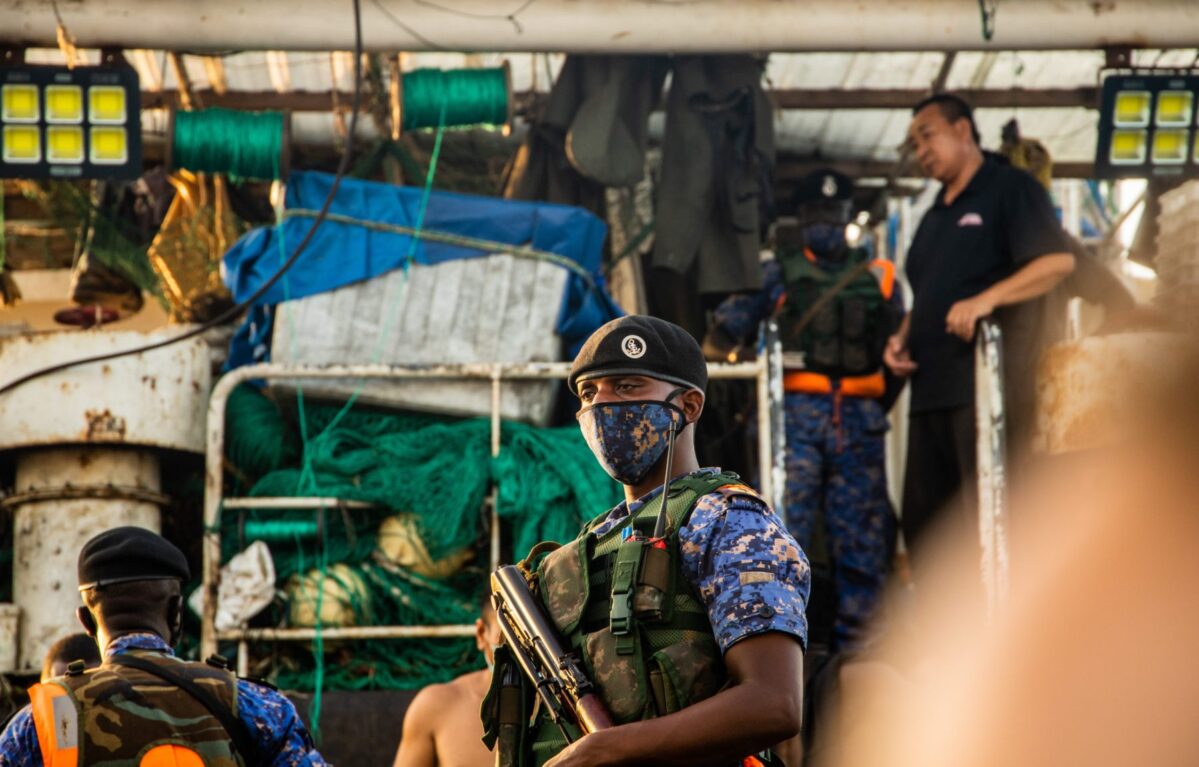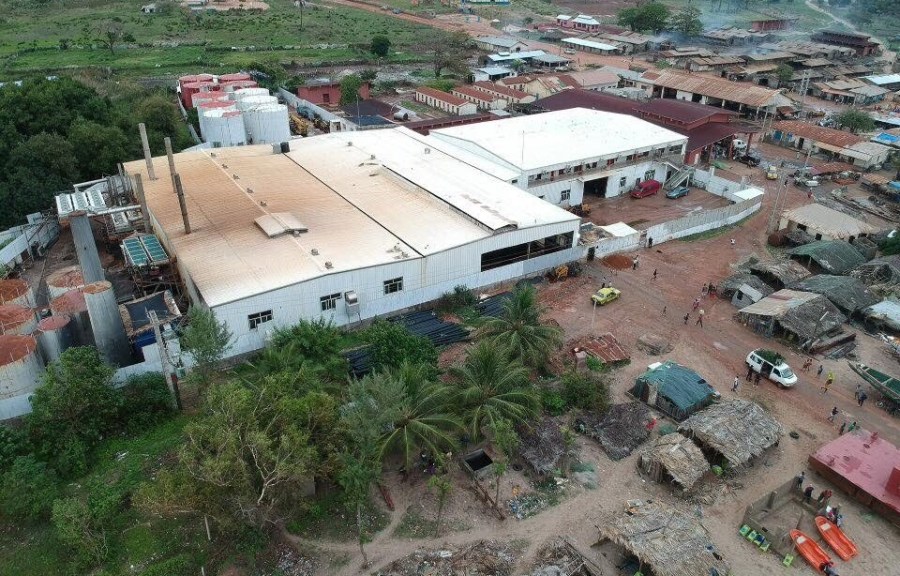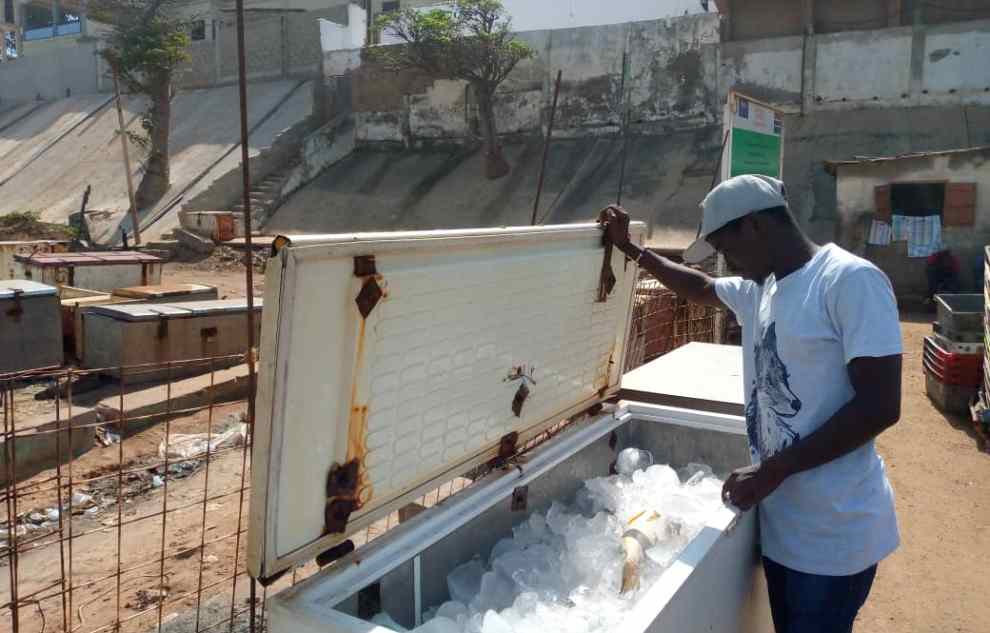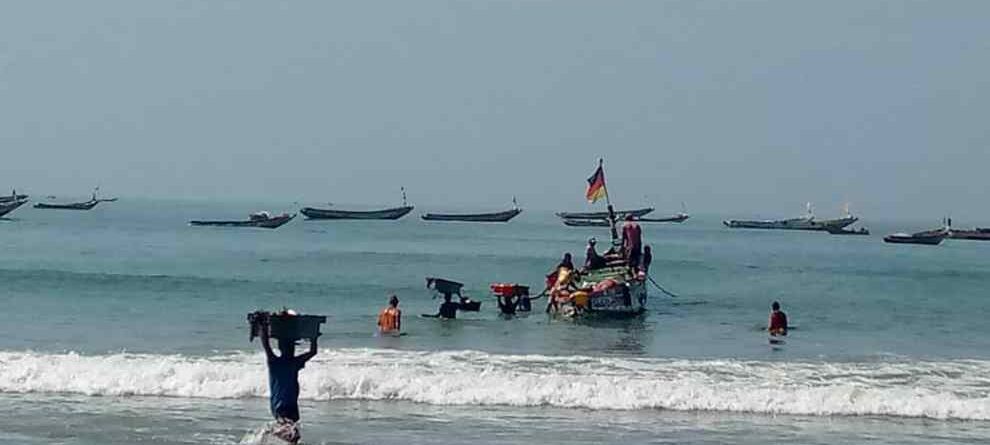Decline in catches as Gambia grapples with illegal fishing
The fisheries sector has also seen significantly dwindling earnings for fishermen and traders.
“There is no fish in the waters…,” he said. “We used to catch up to 90 trays (a tray carries 50kg of fish) of sardinella a day and now we barely get 5 trays a day.” Touray owns a boat since 2009.
“Our catches used to be good,” said Eliman Jammeh, a father of 4, who owns two boats operating in Gunjur— a coastal fishing community an hour drive from Banjul. Jammeh started going to sea in 1988.
“On a good day before—say early 2000s— one can catch up to 200 trays of fish… Now, on a very good day, one barely gets 100 trays,” said Jammeh.
In stark contrast to information shared by fisherfolks, the permanent secretary at the Ministry of Fisheries, Dr Bamba Banja, said in a recent media interview that the country has over 500 thousand tons of pelagic resources.
“We have over 500 metric tons of pelagic resources in this country,” said Dr Banja. “Our resources can handle operations of 5 fish meals in this country.” For fisherfolks, it does not feel so as catches across the country indicate a sharp decline.
Fishing and related activities are a main source of income for at least 200,000 people in the Gambia. And fish accounts for over half of the animal protein Gambians consume.
A recent study by the Food and Agriculture Organisation, state of world fisheries and aquaculture report, indicates fish stocks are overexploited in the Gambia, said Dawda Saine, a marine biologist and the executive secretary of the National Association of Artisanal Fisheries Operators (NAAFO).But until recently, something was being done about it. In 2015, ex-president Yahya Jammeh placed a ban on industrial fishing.In 2018, Gambia also had a so-called “reciprocal fishing agreement” with Senegal, allowing their 15 industrial fishing vessels and at least 200 artisanal fishing canoes in its waters.
In 2018, Gambia also signed a 6-year agreement with European Union allowing their vessels to fish 3300 tons of tuna and tuna-like species as well as 750 tons of hake per year in Gambian waters.
“… The access right given to the Senegalese fishermen under the Senegalo-Gambia fisheries agreement has given rise to the national fleet exploiting the small pelagics,” said a 2017 scientific study group of Food and Agriculture Organization.

Gambia has a 200-mile exclusive economic zone but the country’s navy, due to limited capacity, can barely cover 60 miles, according to Fisheries Minister James Gomez.
Gambian law has barred trawlers—including those issued license by the Fisheries Department—from fishing within the 9 nautical miles from the shores.
“There are trawlers all over the place. If I take you into the sea, for less than 150 meters, you will see trawlers…,” said Touray.
Dembo Manneh, a 60-year-old fisherman in Gunjur, had several encounters with trawlers. He has been going to sea since 1975, when he was 15.
“They use very small-size trawl nets that carries everything along, killing juvenile fishes,” he said. And trawlers encroachment into the 9 nautical means frequent fight with artisanal fisherfolks.
There is, however, no official data to quantify how much the country lose to illegal fishing annually. But according to a new report released by a High Level Panel for a Sustainable Ocean Economy in August.
And recent times has seen an increase in the arrest of trawlers at sea with the support of a US-based non-governmental organization called Sea Shepherd.
On August 27, 2019, the navy arrested two fishing vessels, Lao Yuan Yu 010 and Victory 205, for several fisheries violations including fishing without a fishing log book and fishing within nine-nautical mile.
On October 17, 2019, the Gambia Navy operating on board the Sea Shepherd vessel, arrested ten trawlers illegally fishing in the country’s waters.
And on November 4,Gambian navy working on board the Sea Shepherd vessel Sam Simon, arrested 3 trawlers arrested within the 9 nautical miles, said Heather Stimmler, Sea Shepherd Global Media Director.
Two of the trawlers, Gorde 105 and Gorde 107, were also double-bagging their net—the act of fishing with one net inside of another one–so as to circumvent mesh size requirements, another offense under the Gambian fisheries regulations.
“The Gambia implements mesh size requirements to ensure that undersized and juvenile fish can escape, thereby conserving fish populations to mitigate overfishing,” said Mar Casariego, captain of the Sam Simon.
Dr Banja painted a helpless picture in a recent media interview. “As a government, we are handicapped. We are assisting the navy to get a boat to better patrol these areas.
Despite the lack of capacity and resources to conduct surveillance in Gambian waters, the Navy arrested 32 fishing vessels from 2018 to 2019, according to the Fisheries Ministry.
Lack of capacity of the Gambian navy to monitor the country’s waters is not the only challenge to combating illegal fishing. The fishing laws against illegal fishing are not also strictly enforced.
Breaching of conditions of licence by foreign vessels attract a punishment of mandatory minimum fine of D5 million dalasis (approx. US$96,500) and a maximum of D25 million (approx. US$482,700).
However, none of the fines imposed are compliant with the dictates of the Act. A Chinese vessel Golden Lead 1, for example, has been fined to pay D1 million for fishing in prohibited zones.
“It does not make sense to fine an offender D5 million or D25 million for fishing in the wrong zone…,” Dr Banja told Malagen in October.
But also, the Consultative Committee, the mechanism established by the Act to settle infringements out of court, is not transparent.
The Act also gives the minister too much powers. The Minister could, without any consultation, review the decision of the Committee. This caused controversy on November 17 when Fisheries Minister Gomez authorized the release of Betty, a Senegalese vessel caught fishing in Gambian waters.
“Based on the uncertainty of those circumstances such as the contradiction between the claims advanced by the navy and those by the Fisheries observer on board the vessel, the Hon Minister concluded that the vessel be released immediately,” states the letter written to the navy.
But a source at the Ministry who does not want to be named told Malagen that the “fisheries observer” did sign on the navy’s report “acknowledging the offense”.
On the same day, the navy again operating onboard Sea Shepherd’s Sam Simon patrol boat caught a Senegalese boat, Fatima, fishing without a license. A source informed Malagen that Minister Gomez ordered it to be released. However, the minister refused to comment on the issue.

A drone image of the Golden Lead, Gambia’s largest fish meal and fish oil processing factory. Information about the processing capacity of the fish meals is limited. However, officials said they have a combined processing capacity of 40, 000 kilos a month.
In the third week of November, several big Senegalese boats with capacities to carry up to 800 trays of fish— 40 thousand kilos—started arriving in Gunjur.
Those boats that supplies the fish meals, according to Dembo Manneh, are also frequent users of small net sizes.
The boats, Malagen has learned, has contracts with the fish meals for a day supply of fish.
Gambia has 3 fishmeal and fish oil factories located at the heart of the country’s busiest fishing communities: Sanyang, Kartong and Gunjur.
In September 2019, the National Association of Artisanal Fisheries Operators (NAAFO) organized a press conference at the Gunjur fish landing site to denounce the negative impact of the fish meals on the country’s marine resources.
“The fish meals facilitate overfishing in our waters. They brought boats from Senegalese and enter into contract with them. These boats are bigger than our Gambian boats and they are encouraging overfishing,” said Saine.
Peter Hammarstedt is a captain aboard Sea Shepherd. “Some of the vessels that have been arrested for entering the 9 nautical mile special management area are trawlers that deliver fish to fishmeal factories,” Peter told Malagen.
And out of 16 trawlers Gambia navy caught in the waters through the help of the Sea Shepherds since 2019, 11 were vessels arrested for fishing inside the special management area, said Hammarstedt.
In 2017, a scientific study group of Food and Agriculture Organization also concluded that “landing of small pelagic… fish have increase mainly due to fish meal factories in Gunjur and Sanyang”.
Meanwhile, Dr Banja has confirmed to Malagen last year that they do not have data on how much fish the fish meals consume a day. Saine said those monitoring failures of the activities of the fish meals poses a serious challenge in sustainable fisheries management.
The timing is right for their coming. Gambia is about to lift its mandatory 6-month night fishing ban which spans from June to November. This is the time the fish meals also swing in operation.

Two people who have seen an incredible decline in their revenue are Jabou Camara, a mother of 9 and Aminata Manneh, a mother of 4.
“There were good days. We are able to save $100 a day before. For 2 months now, I could not save $40…,” said Camara. She was speaking for Manneh who has been a single mother for over a decade now.
A kilo of lady fish and barracuda cost US$5. “Most people can’t buy it,” said Cessay. “Some fishes weigh about 5 or 6 kilos. How can an average person who goes to the market with D250 ($5) buy that fish that would cost over US$20?”
For Saine, there could not have been a more urgent time to stop the operations of fish meals and combat illegal fishing in country’s waters.
Dembo Touray, 37, owns a boat that operates from Bakau, one of Gambia’s largest fishing communities about 16 minutes’ drive from Banjul.
On a usual day, Touray would be busy with middlemen after returning from sea by noon. Those are busy days long missed. He sat on a wooden plank near an old cold storage at Bakau landing site, having his second day off.
Dr Banja was sent on administrative leave and is currently being investigated following Malagen’s story implicating him for allegedly taking a bribe from a Chinese trawler, Golden Lead 1, caught illegally fishing in the country’s waters in 2018.
Recent times has seen considerable decline in catches, something that leave families dependent on fish business struggling.
Overfishing
This ban was meant to ensure regeneration of fish stock in country’s waters. However, the new government in 2017 lifted the ban and issued 73 licenses to trawlers, of which 8 were for pelagic fish.
In return, the EU will contribute €550,000 to develop Fisheries capacity and improve government revenue. This adds to 1736 artisanal fishing boats in country’s waters as of 2017.
And in the waters in Gunjur and Tanji—country’s biggest fish landing sites— big boats painted with Senegalese flags sit indiscriminately on the blue ocean.
Illegal fishing
This gap in country’s sea surveillance capacity means trawlers can illegally operate in their waters without being caught.
The special management area is preserved for small scale fishermen. But trawlers violate this without much detection.
In Bakau, Gunjur and Sanyang fishing landing sites, fishermen complained of having encounters with trawlers in the special management area daily.
“They mostly operate at night and they cut our nets when we leave them at sea,” said Manneh.
Gambia, Guinea, Guinea-Bissau, Mauritania, Senegal and Sierra Leone record together an annual loss of estimated US$2.3 billion to illegal fishing.
Capacity is a constraint,” said Dr Banja.
The law doesn’t “make sense”
The full details of its activities are kept in secret, including details of the charges of infringements, how decisions are reached and the full list of the fine imposed and paid.
The vessel was caught by the navy and found guilty by the Committee.
The source added that the log book of the vessel confirms the navy’s charges which was why the Consultative Committee ordered a fine of D5 million (approx. US$96,500).
The havoc of the fishmeal
This is the home of Golden Lead, Gambia’s biggest fish meal and fish oil factory whose fish consumption in 2016 accounted for approximately 40% of the country’s total reported catches, according to a study by Changing Market Foundation.
Quick money and it saves them the trouble of involving middlemen, which makes fishmeal a better option, said Ahmed Manjang, an environmental activist in Gunjur who has been campaigning against the operations of fishmeal factories in his community.
Research has shown that the fish meals are a major driver of overfishing and illegal fishing in country’s waters.
This press conference was attended by fisherfolks, boat owners and fish vendors, majority of whom are women. Marine biologist Dawda Saine led the team but the Ministry, according to Saine, declined their invitation.
“The boats they have contracts with cannot sell fish to vendors unless the fish meals have enough. That makes the women fish vendors also lose out.”
Middlemen’s business nightmare
Both are fishmongers who take fish from fishermen and sell it in Brikama and Serrekunda, the country’s biggest fish markets. They have been in business for over 2 decades.
And now, dwindling revenue means financial struggles for the two women. And with declining accessibility of fish comes inflating prices.
The high prices compelled by scarcity are also bad news for a country where nearly half of the population lives below a dollar a day.
Abdourahman Ceesay, 28, is a fish vendor who has been selling lady fish and barracudas for about a decade now. The number of fish he would sell in 2 days now takes over 2 weeks, he said.
“We are increasingly losing our waters and, in the end, it is the poor people who rely on fish for animal protein and fisherfolks and vendors who rely on it for their livelihoods who will suffer,” said Saine.

